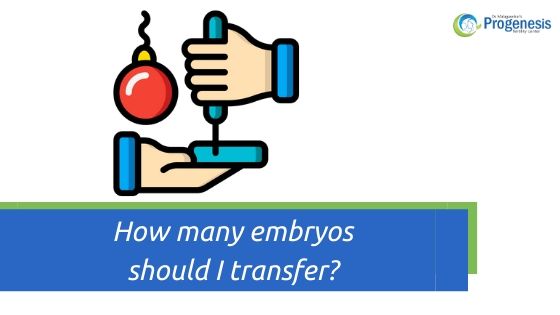The IVF procedure involves taking some decisions, which are emotionally demanding. One of these decisions has a relation to the number of embryos that you wish to transfer during an IVF cycle. You may feel that transferring more than one embryo will optimize the chances of conceiving successfully. If you have concerns related to cost and age, then you may feel like transferring one embryo may not serve your purpose. Pioneers of IVF treatment stresses that women under the age of 38 who had two single embryo transfers without successfully conceiving may opt to transfer only one embryo. When it comes to making the procedure safe without putting in line the health of the mother and baby single embryo transfer is the ideal choice.
Multiple VS Single Embryo
The global standard for IVF treatment proposes a single embryo transfer during the IVF cycle. Thus, the Society for Assisted Reproductive Technology recommends one embryo transfer for most IVF patients. The reason behind it is the success rate and safety.
Delivering a healthy baby is the supreme goal of the IVF procedure. Thus, if you can transfer more than one embryo, the chances of having a twin or multiple births increase. On the downside, it puts inline the health and safety of the baby and the mother.
Common challenges of multiple births
Multiple births have hazards, as illustrated below:
- Nearly 60 per cent of the twins are preterm, and 90 per cent of the triplets are preterm
- The risks of life-threatening maternal complications also become high in twin pregnancies, and maternal death is close to four times higher.
- Multiple births of infants are vulnerable to low birth weight and premature birth affecting the long time well-being of these children
The chances of complications increase with each additional baby a woman carries during their pregnancy. You need to be aware of these challenges, and a baby who is premature at 26 weeks has survival chances of 80 per cent. The rate of survival improves exponentially after this.
The success rate of double embryo transfer VS Single embryo transfer
The success rate of Double embryo transfer and single embryo transfer during IVF are similar for many people. Women having decent chances of success with ART with single embryo transferred had the same number of live deliveries in comparison to those who choose to transfer multiple embryos. Most of the infants delivered were singleton.
Choosing between Single Embryo Transfer and Multiple Embryo Transfer
During an IVF cycle, most of the patients by default, prefer to choose single embryo transfer. Single Embryo transfer is preferable under the following conditions:
- Favorable prognosis for IVF therapy
- You are below 38 years
- You have embryos and eggs of good quality
- You have tried IVF treatment before
When to consider multiple embryo transfer
The Society of Reproductive Medicine in India has established clear guidelines for embryo transfer for different populations. You may consider transferring two or more embryos under the following conditions.
- The person is over the age of 38 years
- Has not got success with multiple IVF cycles
- Have unfavorable prognosis with IVF
The Risks Associated With Multiple Embryo Transfer
There is a one per cent chance of conceiving a twin or multiple gestation births in transferring a single embryo. If you transfer two or more embryos, the chances of multiple gestation births go up to 28 per cent. Among young women, the risk of numerous gestation births is higher.
If a woman carries multiple fetuses, then the rate of infant mortality and cerebral palsy increases manifold to mid-single digits per child. The risk of complications for the mothers also leverages at an alarming rate.
Multiple gestation births tend to be premature 57 per cent of the time for twins, whereas, for triplets, the rate of premature birth increases to more than 90 per cent. Since the baby’s brain develops in the last month of the gestation period in which the cortical gray matter forms.
Singletons Resulting From Multiple Embryo Transfer
If single babies are born from IVF, you can associate their welfare to the number of embryos used in the transfer. Considering that, the mother transferred one embryo, then the chances of the premature birth of a singleton are highly unlikely. Whereas if the multiple embryos were transferred then the chances of the premature birth of a singleton serge considerably.
Benefits of Multiple Embryo Transfer
When a patient decides to have, multiple embryos transferred in her uterus, the chances of live birth increases substantially in comparison to transferring only one embryo. If you wish to reduce the number of transfers required, then it makes sense to opt for multiple embryos per transfer. It brings down the number of transfers required to materialize a live birth. It will not only shorten the time and lower the cost of having a child.

